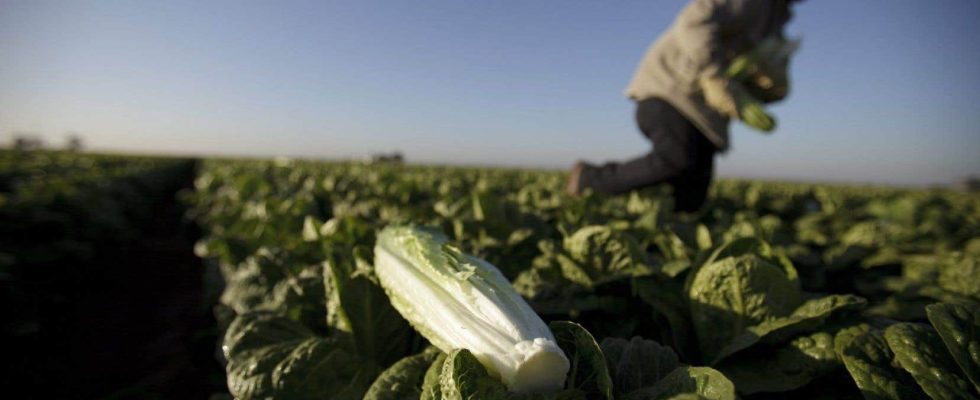Lettuce prices are expected to rise next month and could remain high through the summer, according to agricultural watchers, particularly due to flooding in a key agricultural area of California.
The Salinas Valley, where much of the lettuce and other produce consumed in North America is grown each year, has experienced heavy rains and storms since the start of the year, said John Bishop, national buyer for the fresh produce distributor Fresh Start Foods. All that extra water flooded fields and delayed planting, causing hundreds of thousands of dollars in crop damage.
Tens of thousands of acres of farmland have been flooded in Salinas since the start of the year, according to Mark Shaw, vice president of operations for California-based Markon Cooperative. Below-average temperatures are compounding farmers’ hardship, he said in an email.
Salinas is the same region where the disease hit lettuce crops last fall, creating severe shortages and persistently high prices of iceberg and romaine lettuce that were noticed by Canadian consumers in grocery stores.
Each November, production of lettuce and some other vegetables shifts to warmer desert areas, including Yuma, Arizona, or elsewhere in California. The second week of April is when the majority of production returns to Salinas, but this spring the region will not be ready.
“We are preparing for a market where demand will exceed supply, which will push prices up as we have seen in October, November and December last year”, according to Mark Shaw, who forecasts four to six weeks of limited supply.
But Mr Bishop predicts that a significant gap could last until July.
Ron Lemaire, president of the Canadian Produce Marketing Association, says the agriculture industry has a history of being creative in dealing with inclement weather. Right now, California farmers are deploying all the tools at their disposal to mitigate the effects of the rain, he said, but he expects there will be less production in the coming months, which usually pushes prices up. price.
Weather is the biggest factor affecting product prices, followed by transportation costs, according to Rich Donsky, co-owner of Ontario distributor Mister Produce. It is therefore not surprising that the agricultural industry is investing more in controlled environment agriculture, such as greenhouses and vertical farms.
For example, Fresh Start’s parent company, Gordon Food Service, has partnered with indoor farming company Square Roots, building indoor farms in locations across the United States, including distribution centers. “We believe this is the future of agriculture and our food supply,” added John Bishop.
The industry has also recently seen greater interest in year-round production in Canada as climate change makes issues such as extreme weather and drought more prevalent, according to Dalhousie University professor Sylvain Charlebois. , Nova Scotia, and director of the institution’s agri-food analysis laboratory.
John Bishop expects the push to grow more produce in Canada to continue. “Where we get our food from and how it gets to us all contribute to the cost of what we buy. So it makes sense to find ways to produce products on a local basis,” he said.
The greenhouse industry will never replace outdoor cultivation, according to Ron Lemaire, but he believes it can fill the gaps in the supply chain. “It’s part of the solution, but it’s not the complete solution.”
Major food companies are investing in Canadian-grown products. Sylvain Charlebois reports that McCain has poured millions into vertical farming venture GoodLeaf Farms and California berry giant Driscoll’s recently partnered with Canadian farmers to grow berries north of the border.
And in 2020, fast-food chain Wendy’s announced that it would now use Alberta greenhouse-grown lettuce in all its salads and sandwiches.
Vertical farming has received a lot of attention and capital in recent years, but according to Ron Lemaire, the business model needs to be further developed. Sylvain Charlebois expects the investment in local products to continue in the years to come.
“I think there is an awareness […] our vulnerability, especially when it comes to fruit and vegetables. And not just during the winter months, but all year round”.
